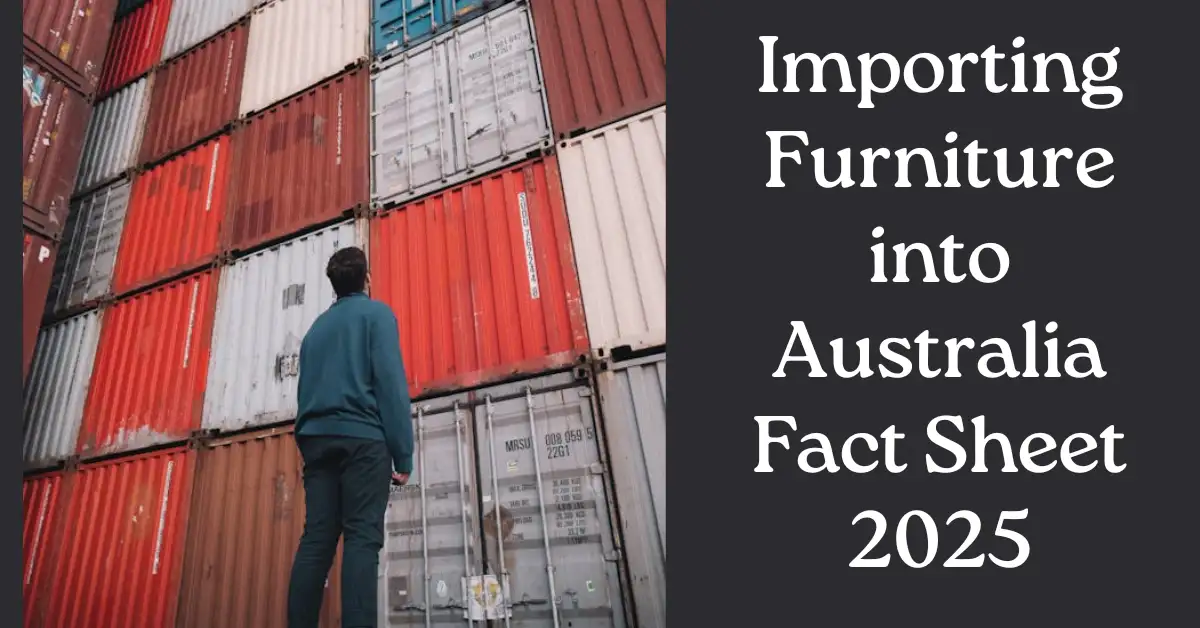Importing Furniture into Australia Fact Sheet 2025

Importing Furniture into Australia Fact Sheet 2025
Australia’s dynamic market often relies on imported furniture, infusing homes and businesses with global styles. Looking ahead to 2025, factors like evolving trade rules, sustainability demands, and consumer tastes shape how you bring items into the country.
Below, we lay out a fact sheet for importing furniture into Australia—covering regulations, shipping guidelines, plus a nod to Suren Sourcing if you crave edgy or rustic-luxe lines not widely found locally. A well-informed approach ensures smooth logistics, compliance, and success in a competitive environment.
Why Import Furniture into Australia?
Local Aussie lines might not always fulfill niche aesthetics—like industrial combos or distinct vintage carvings. Imported pieces can fill design gaps or offer cost advantages if shipping is feasible. Alternatively, brands like Suren Sourcing ship internationally, bridging your desire for reclaimed or metal-framed furniture. Whether you’re a retailer, designer, or homeowner seeking variety, imports can refresh your options in a market that appreciates unique, globally sourced décor.
VISIT FOR :: Jewellery Sourcing
Key Regulatory Bodies
- ABF (Australian Border Force): Manages customs clearance, duties, and taxes.
- Department of Agriculture, Fisheries and Forestry (Biosecurity): Ensures imported timber meets pest-free standards.
- Australian Competition and Consumer Commission: Oversees product safety labeling or materials disclaimers.
Complying with each helps you avoid port delays or additional fees.
Steps to Importing Furniture into Australia Fact Sheet
It’s time to follow the steps to follow if you want to import. These are, as mentioned below:
Step 1: Pest Control
- Wooden items require clearance—proof they’re free from bugs or diseases.
- Possible actions: fumigation, heat treatment, or official pest-free certificates from the exporter.
- Rhetorical question: Are you shipping raw, reclaimed, or partially treated wood?
Answer: Each scenario can demand different documentation or quarantines.
Step 2: Import Taxes
- Furniture imports typically face a duty percentage (varies by HS code) plus GST (10%).
- Check if any free trade agreements apply (e.g., if sourcing from certain countries).
- You’ll file an Import Declaration if goods exceed certain value thresholds.
- Engaging a customs broker might simplify classification and cost calculations.
Step 3: Proper Labeling
- Australia’s strict biosecurity means packaging (like wooden crates) also demands treatment.
- Cartons or pallets must be labeled with material origin or treatment stamps.
- If you’re reselling in retail, local labeling laws might require disclaimers on materials (solid wood vs. composite), country of origin, or safety instructions (especially for kids’ furniture).
- Ensure your supplier tags everything accordingly.
Step 4: Potential Checks
- Random or risk-based inspections can occur.
- If your container is flagged, ABF or biosecurity officials open and examine items, possibly incurring extra fees or delays.
- Avoid half-truths on your paperwork—like underdeclaring item value—to reduce suspicion.
- Stay transparent to expedite clearance.
VISIT FOR :: HOW TO IMPORT FURNITURE FROM CHINA TO INDIA?
Step 5: Using a Forwarder
- A forwarder handles ocean/air booking, customs forms, quarantine liaising, and final transport.
- They’re invaluable if you’re new to importation or prefer professional support.
- Fees differ, so compare quotes—some also handle door-to-door service.
- Ensure they understand wood furniture specifics and any brand demands (like special packaging).
Costing Breakdown
- Furniture Invoice Cost
- Freight Charges (ocean or air)
- Insurance
- Customs Duty
- GST
- Any Quarantine/Inspection Fees
- Local Delivery
All combined form your “landed cost.”
Check if your margin or personal budget remains healthy after each addition.
Timelines and Seasonal Surges
- Importing typically requires 8–12 weeks by sea, factoring production time, shipping, and clearance.
- Seasonal rushes—like year-end or pre-summer—may cause container backlogs.
- Plan your business rollout or renovation schedule to buffer potential delays.
- If you’re furnishing a new store, order early to avoid opening day stress.
Involving a Customs Broker
- For complex or large shipments, a licensed customs broker can ensure correct classification, duty minimization, or compliance with local rules.
- They handle paperwork, track shipments, and advise on potential pitfalls.
- Though it’s an added cost, it can save time and avoid mistakes that lead to heavy fines or demurrage fees at ports.
Conclusion
Importing furniture into Australia post-2025 demands balancing compliance, shipping logistics, cost structure, and sustainability. By clarifying treatments for wood, ensuring correct labeling, budgeting for duties/GST, and employing either a customs broker or a well-informed approach, you sidestep typical pitfalls.This comprehensive strategy fosters successful entry of global furniture into Aussie homes or commercial spaces, enriching the design landscape while respecting local regulations.
READ MORE :: Top 10 Furniture Importers in Sydney

